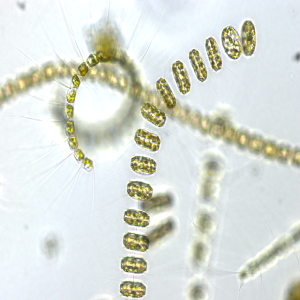Phytoplankton community as monitoring tool in the terminal stretch of a micro-tidal estuary facing the Tyrrhenian Sea

Accepted: 3 May 2023
SUPPLEMENTARY PDF: 27
HTML: 15
All claims expressed in this article are solely those of the authors and do not necessarily represent those of their affiliated organizations, or those of the publisher, the editors and the reviewers. Any product that may be evaluated in this article or claim that may be made by its manufacturer is not guaranteed or endorsed by the publisher.
Authors
Mediterranean coastal systems, particularly those characterized by river mouths, have played an important role in the history of human civilization, thanks to unique species assemblages, a high biodiversity, and complex ecological interactions. The overlapping of multiple cross-scale effects, triggered by the ongoing climate change, makes these systems particularly important sites for ecological studies. Here, we have investigated the phytoplankton community structure in the terminal stretch of the Sele River (Tyrrhenian Sea) under two different hydrological regimes: i) with river mouth occluded by sediments preventing water exchange with the sea; ii) with river mouth completely opened, which allowed the maximum water mass exchanges between the river and the sea. The strong variations in physical-chemical properties of the water column, the point-distribution of total phytoplankton biomass, and the dominance of cryptophytes and cyanophytes under occluded and opened river mouth, respectively, indicate the presence of strong allogenic pressures acting on the system. Our data suggest that the monitoring of phytoplankton communities in the terminal stretch of micro-tidal estuaries, could be a useful tool for studying the extent of climate change underway in Mediterranean coastal marine areas.
How to Cite

This work is licensed under a Creative Commons Attribution-NonCommercial 4.0 International License.
PAGEPress has chosen to apply the Creative Commons Attribution NonCommercial 4.0 International License (CC BY-NC 4.0) to all manuscripts to be published.


 https://doi.org/10.4081/aiol.2023.11070
https://doi.org/10.4081/aiol.2023.11070



